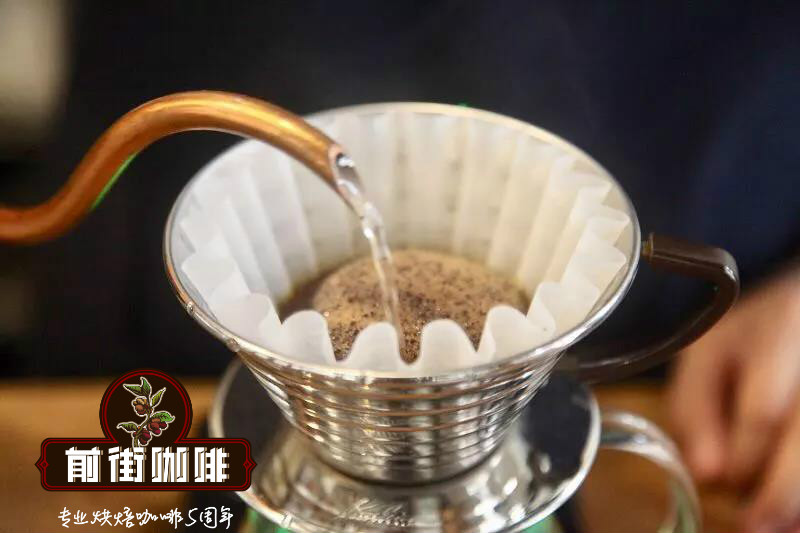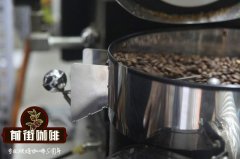What are the characteristics of honey-treated Nicaragua coffee? What roasting degree is suitable for Nicaragua coffee?

Professional coffee knowledge exchange more coffee bean information please follow the coffee workshop (Wechat official account cafe_style)
Some of the fruits that stand out from the classifier are transported to the depulper for peeling and pulp. The so-called "honey-treated" coffee (honey process) describes coffee as sweet as honey, not really processed with honey. The coffee kernel which has been peeled but still clings to the flesh is directly dried and some fructose will be absorbed by the core. This method has different names in different countries, such as pulped natural, semi washed and so on.
Among them, in Costa Rica, where the government strictly controls the use of water, coffee farmers have created honey treatments named to retain "different thickness of flesh", including yellow honey (yellow honey) and red honey (red honey), which have the thinnest pulp layer, and black honey (black honey), the famous owner of last year's national COE champion La Brumas de Zurqui.
Traditionally, Nicaraguan coffee is mainly washed with water, but because the trend of "honey treatment" has become popular in China and the United States in recent years, some batches are "tailor-made" at the request of buyers.
Most of the kernels after beating will stay in the cement pool for 8 to 12 hours of aerobic fermentation. At this stage, coffee beans are wrapped in shells like melon seeds (parchment coffee) until they are exported. On the outside, there is a layer of pectin (mucilage) that is difficult to scrape off with a knife. The biggest purpose of fermentation is to decompose and wash away pectin before it gets moldy, which is called fully washed processing.
Stunted or inferior fruit floats to the end of the tank. The coffee collected from there is directly labeled as commercial grade and sent to the processing plant. As for those who sink underwater, they are eligible to participate in the next round of screening, but they will not be able to tell whether they can become boutique coffee until they are processed.
Don't underestimate the surprises of Jinotega, Madaguelba and segovia, which are the producers of fine Nicaraguan coffee. The fine Nicaraguan coffee is printed with the word (SHG) on the bean bag, which represents the coffee produced by the high-altitude manor. Segovia is an outstanding and unique area composed of cooperatives on the high platform in the north.
Light baked City (fragrance): lemon grass aroma, citrus slightly sour is very attractive, taste as bright and thin as traditional Central American beans, fruit carambola sweet, with a sweet and sour mango finish.
Medium baking (general B): the aroma of jasmine, citrus acid is masked by the aroma of milk in front, high-quality slippery mouth, the sweetness of plum candy turns to red apple after cooling at the end, and the whole cup of coffee is pleasant.
Heavy roasting (general C): peach apricot nutty aroma, taste similar to beeswax texture mellow, full of malt and chocolate sweet, Nicaraguan coffee heavy roasting (slightly strong to strong) is really very suitable for brewing Italian coffee, you can feel the mellow side of Nicaraguan coffee.
END
Important Notice :
前街咖啡 FrontStreet Coffee has moved to new addredd:
FrontStreet Coffee Address: 315,Donghua East Road,GuangZhou
Tel:020 38364473
- Prev

COE Award winning Manor Notre Dame Manor of Nicaragua introduces the characteristics of Nicaraguan Pacamara Coffee
Professional coffee knowledge exchange more coffee bean information please pay attention to the coffee workshop (Wechat official account cafe_style) the growing conditions in Nicaragua are not inferior to those in Central American countries, grown in shaded coffee at high elevations, round and balanced with less sharp acidity, the main unknown factors are war and hurricanes, resulting in the unsustainable operation of a single farm and no historical data.
- Next

The ancient Blue Mountain Coffee Farm in Jamaica Clifton Coffee Farm introduces the flavor of Blue Mountain Coffee.
Professional coffee knowledge exchange more coffee bean information please follow the coffee workshop (Wechat official account cafe_style) Jamaica (Jamaica) Blue Mountain Coffee, the legal coffee production area, because there are constantly shrouded by blue fog, so the local people named the Blue Mountains of this area. The Blue Mountain producing area (Blue Mountain) is located in eastern Jamaica, spanning 45 km and 20 km wide.
Related
- Detailed explanation of Jadeite planting Land in Panamanian Jadeite Manor introduction to the grading system of Jadeite competitive bidding, Red bid, Green bid and Rose Summer
- Story of Coffee planting in Brenka region of Costa Rica Stonehenge Manor anaerobic heavy honey treatment of flavor mouth
- What's on the barrel of Blue Mountain Coffee beans?
- Can American coffee also pull flowers? How to use hot American style to pull out a good-looking pattern?
- Can you make a cold extract with coffee beans? What is the right proportion for cold-extracted coffee formula?
- Indonesian PWN Gold Mandrine Coffee Origin Features Flavor How to Chong? Mandolin coffee is American.
- A brief introduction to the flavor characteristics of Brazilian yellow bourbon coffee beans
- What is the effect of different water quality on the flavor of cold-extracted coffee? What kind of water is best for brewing coffee?
- Why do you think of Rose Summer whenever you mention Panamanian coffee?
- Introduction to the characteristics of authentic blue mountain coffee bean producing areas? What is the CIB Coffee Authority in Jamaica?

